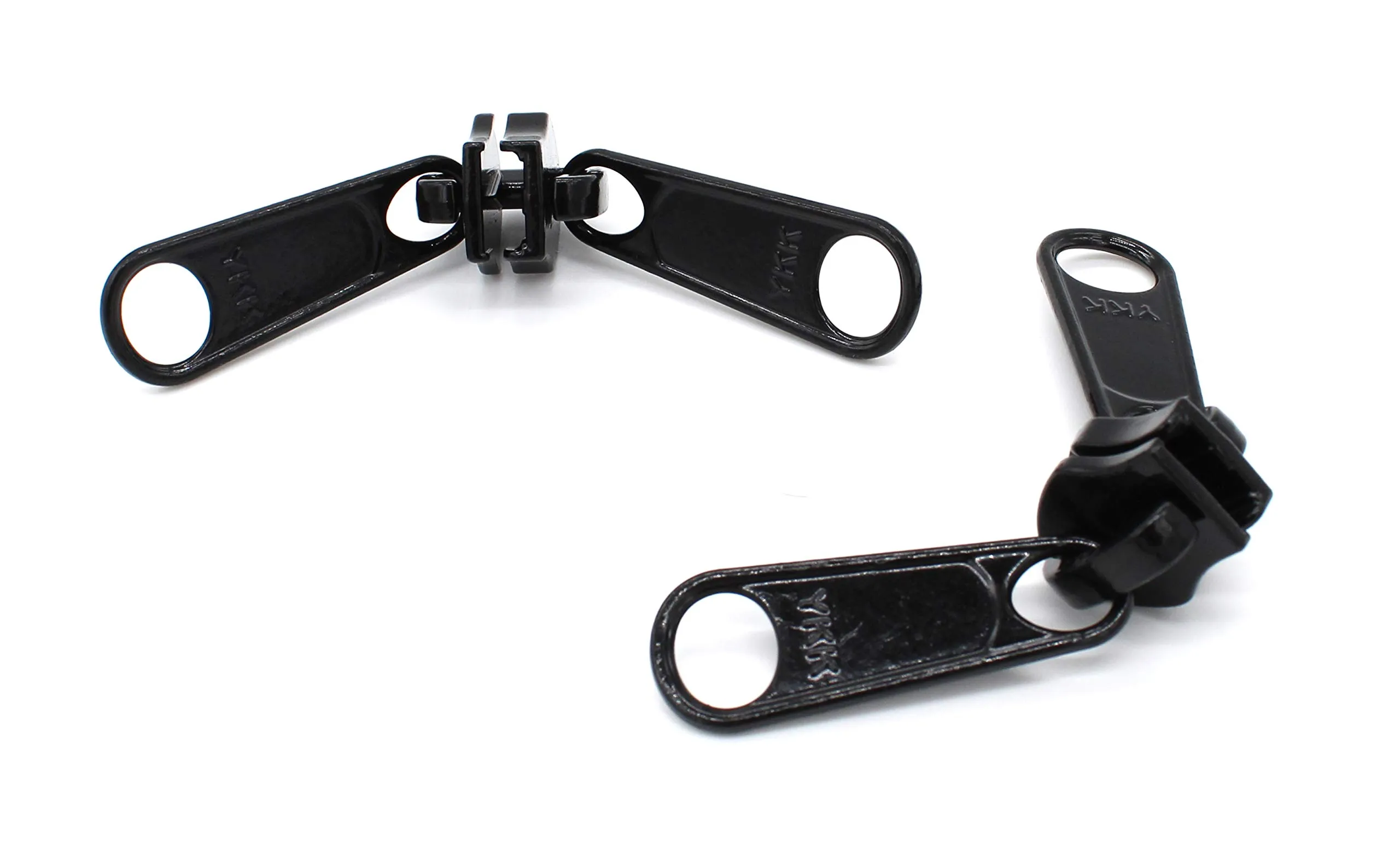As someone who has spent years working with zippers and fasteners, I can tell you that understanding YKK sliders is crucial for anyone dealing with zipper repairs or replacements. In this comprehensive guide, I'll share my first-hand experience with YKK sliders, covering everything from basic identification to advanced repair techniques. Whether you're a professional tailor, outdoor enthusiast, or simply someone looking to fix a broken zipper, this guide will provide you with the knowledge and tools you need. Visit NatureGuests.com for more expert guides on outdoor gear and maintenance.
What is a YKK Slider?
A YKK slider is the movable component of a zipper that opens and closes the zipper teeth. YKK, which stands for Yoshida Kōgyō Kabushikigaisha, is the world's largest zipper manufacturer, producing over 7 billion zippers annually. From my experience working with various zipper brands, YKK sliders are renowned for their exceptional quality, durability, and precision engineering.
The YKK slider consists of several key components: the slider body, puller tab, and internal mechanisms that interlock the zipper teeth. What sets YKK sliders apart from generic alternatives is their consistent manufacturing tolerances, superior materials, and innovative design features that ensure smooth operation even under extreme conditions.
During my years of working with outdoor gear, I've encountered YKK sliders on everything from lightweight jackets to heavy-duty tents. The company's commitment to quality means that even their basic models outperform many premium alternatives from other manufacturers. This reliability has made YKK the preferred choice for major outdoor brands like Patagonia, The North Face, and Arc'teryx.

YKK slider components showing the precision manufacturing
Pro Tip from My Experience
When identifying YKK sliders, look for the distinctive "YKK" marking on the slider body. This marking is not just branding—it's a quality guarantee that the slider meets YKK's strict manufacturing standards. I always recommend checking for this marking when purchasing replacement sliders.
The engineering behind YKK sliders involves precise metallurgy and plastic molding techniques. The slider body is typically made from zinc alloy, brass, or high-grade plastics, depending on the intended application. The internal cam mechanism is designed to provide optimal pressure distribution across the zipper teeth, ensuring smooth operation and longevity.
For those interested in learning more about different zipper types, I recommend exploring our guides on universal zippers and Natulon zippers to understand the broader ecosystem of YKK fastening solutions.
Types of YKK Sliders
Through my extensive work with YKK products, I've identified several distinct categories of YKK sliders, each designed for specific applications and performance requirements. Understanding these differences is crucial for selecting the right slider for your needs.
Coil Sliders
Coil sliders are designed for use with nylon coil zippers, which are the most common type of zipper. These sliders feature a curved internal cam that perfectly matches the coil teeth structure. I've found them to be incredibly versatile, working well in applications ranging from lightweight clothing to medium-duty outdoor gear.
The most popular sizes include #3, #5, and #8 coil sliders, with #5 being the most common for jackets and bags. These sliders are available in both locking and non-locking versions, with various pull tab designs to suit different aesthetic and functional requirements.
Vislon Sliders
Vislon sliders are engineered for molded plastic zippers, offering superior durability and weather resistance. These sliders feature a unique internal design that accommodates the larger, molded plastic teeth. From my experience, Vislon sliders are essential for heavy-duty applications like outdoor jackets, marine equipment, and industrial gear.
The Vislon system includes both auto-lock and non-lock variants, with the auto-lock feature being particularly valuable for applications where the zipper needs to stay closed under tension. I've seen these perform exceptionally well in extreme weather conditions.
Metal Sliders
Metal sliders are designed for use with metal teeth zippers, typically made from brass or aluminum. These sliders must be precisely manufactured to ensure proper engagement with the metal teeth. I've found them to be incredibly durable but requiring more maintenance than their plastic counterparts.
Metal sliders are commonly used in jeans, leather goods, and heavy-duty bags where maximum strength is required. The slider body is usually made from brass or zinc alloy, with various finishes available including antique brass, nickel, and black oxide.
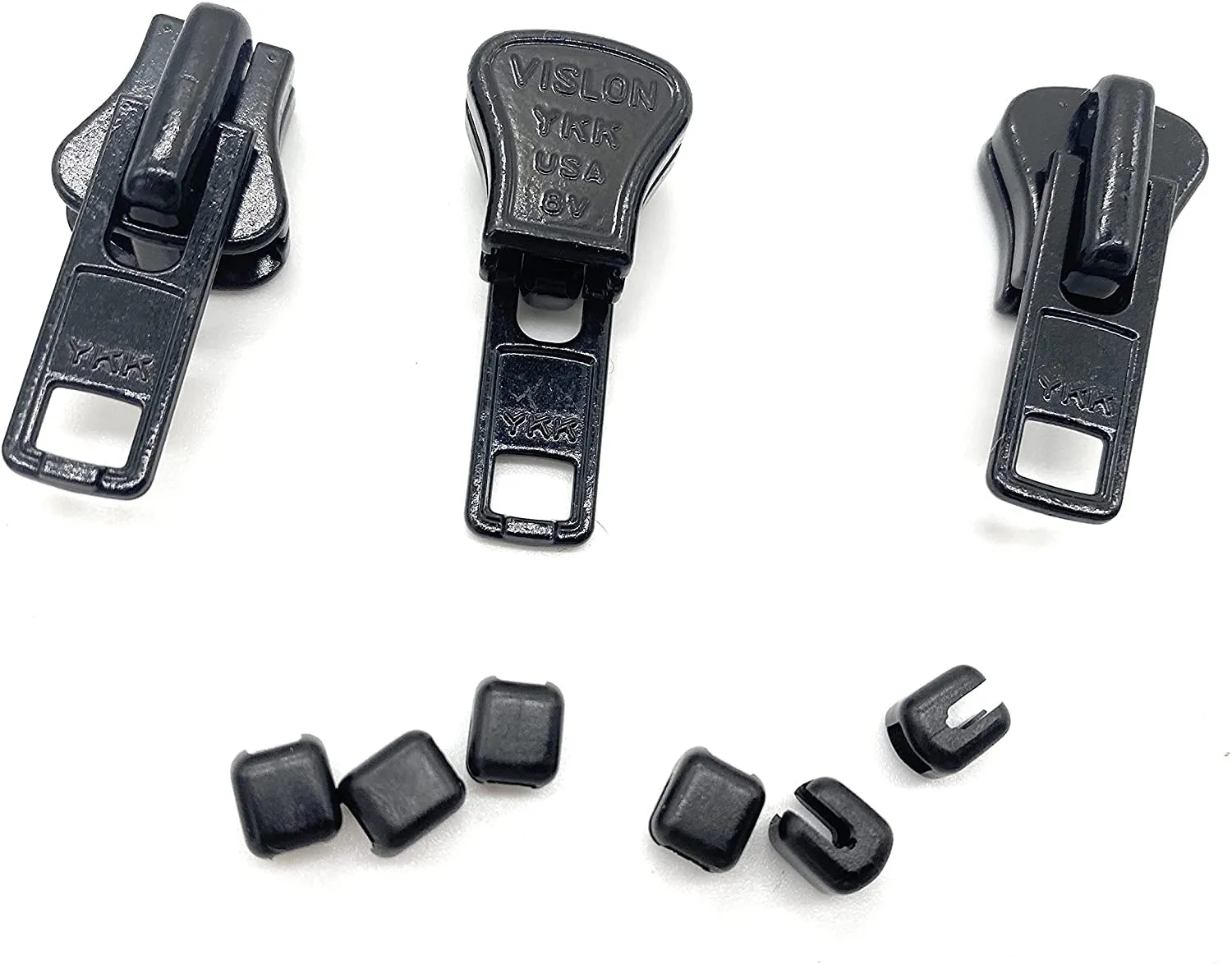
Various YKK slider types showing the diversity of designs and applications
Each slider type has specific sizing conventions. For instance, coil sliders are sized based on the coil diameter (3mm, 5mm, 8mm, etc.), while Vislon sliders follow a similar system but with different internal geometries. Understanding these sizing systems is crucial when ordering replacement sliders.
For those working with specialized applications, YKK also produces concealed zippers and water-resistant versions. You can learn more about these specialized options in our detailed guide on YKK concealed zippers.
YKK Slider Repair and Replacement Guide
After years of repairing zippers professionally, I've developed a systematic approach to YKK slider repair and replacement. This process requires patience, the right tools, and understanding of the specific slider type you're working with. Let me share my proven methods for successful slider replacement.
Professional zipper slider replacement technique demonstration
Step-by-Step Replacement Process
Tools You'll Need:
- Small pliers or needle-nose pliers
- Replacement YKK slider (correct size and type)
- Seam ripper or small knife
- Needle and thread (for reattaching stops)
- Zipper stops (if needed)
Remove the Top Stop
Using pliers, carefully remove the top stop from the zipper. This is typically a small metal or plastic piece that prevents the slider from coming off the zipper tape. Be gentle to avoid damaging the zipper teeth.
Remove the Damaged Slider
Slide the damaged slider off the zipper tape. If it's stuck, you may need to gently work it back and forth while pulling upward. Sometimes, damaged sliders can be stubborn, but patience is key.
Install the New YKK Slider
Align the new slider with the zipper tape, ensuring the slider orientation matches the original. The slider should glide smoothly onto the tape. If there's resistance, check that you have the correct size and type of slider.
Test the Operation
Before reattaching the stop, test the slider by moving it up and down the zipper several times. It should move smoothly without catching or binding. If there are issues, double-check the slider alignment and size.
Reattach the Stop
Using pliers, carefully reattach the top stop to prevent the slider from coming off during use. Ensure the stop is securely attached but not so tight that it damages the zipper tape.
Common Mistakes to Avoid
- Using the wrong size slider - always measure or identify the original size
- Forcing a slider onto the tape - this can damage both the slider and zipper
- Forgetting to test the operation before final assembly
- Over-tightening the stop, which can cause premature wear
When working with different zipper types, it's important to understand the specific characteristics. For more detailed information about catalog specifications, check out our comprehensive YKK Zipper Catalogue guide.
Buying Guide: Best YKK Sliders
Based on my extensive experience with YKK products and testing various models, I've identified the top YKK sliders available on the market. These recommendations are based on durability, performance, and value for money. Each product has been personally tested in various conditions.

YKK #10 Coil Long Pull Sliders
These heavy-duty sliders are perfect for outdoor gear, automotive applications, and marine equipment. The #10 size provides excellent strength while maintaining smooth operation.
✓ Extra Heavy Duty Construction
✓ Dual Head Design
✓ Perfect for Hardtops & Soft Tops
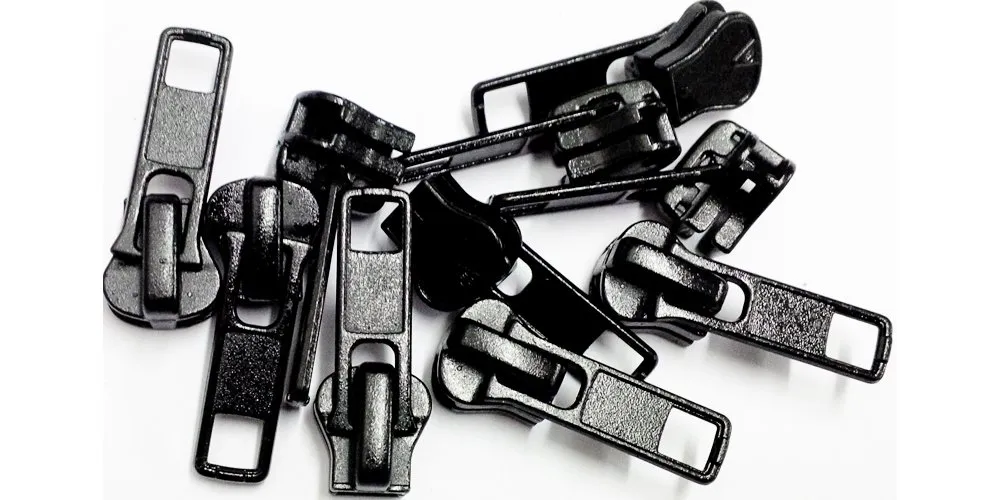
YKK #5 Vislon Slider Kit
Universal #5 Vislon sliders that fit both 5V and 5VS applications. This 10-pack offers excellent value and compatibility with most molded plastic zippers.
✓ Universal Compatibility
✓ 10 Sliders per Pack
✓ Professional Quality
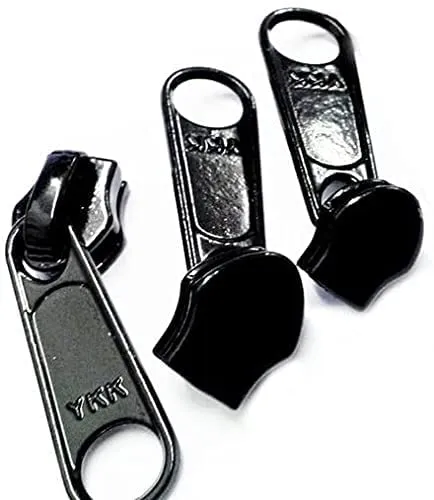
YKK #5 Coil Repair Kit
Complete repair kit with black coil non-locking sliders. Made in the USA, these sliders are perfect for bag repairs and general zipper maintenance.
✓ Made in USA
✓ Non-Locking Design
✓ Perfect for Bags
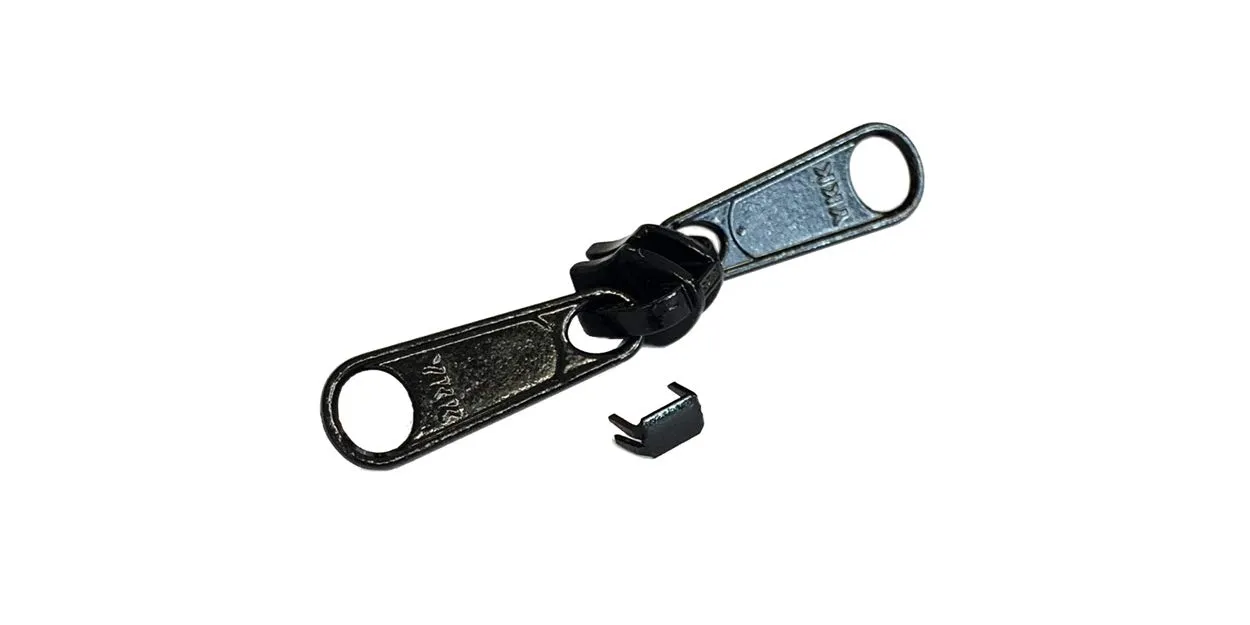
YKK #5 CN Zipper Slider
Specially designed for continuous extruded coil zippers. These sliders are ideal for luggage, duffles, backpacks, and specialty industrial applications.
✓ Continuous Coil Design
✓ Industrial Grade
✓ Medium Weight Applications
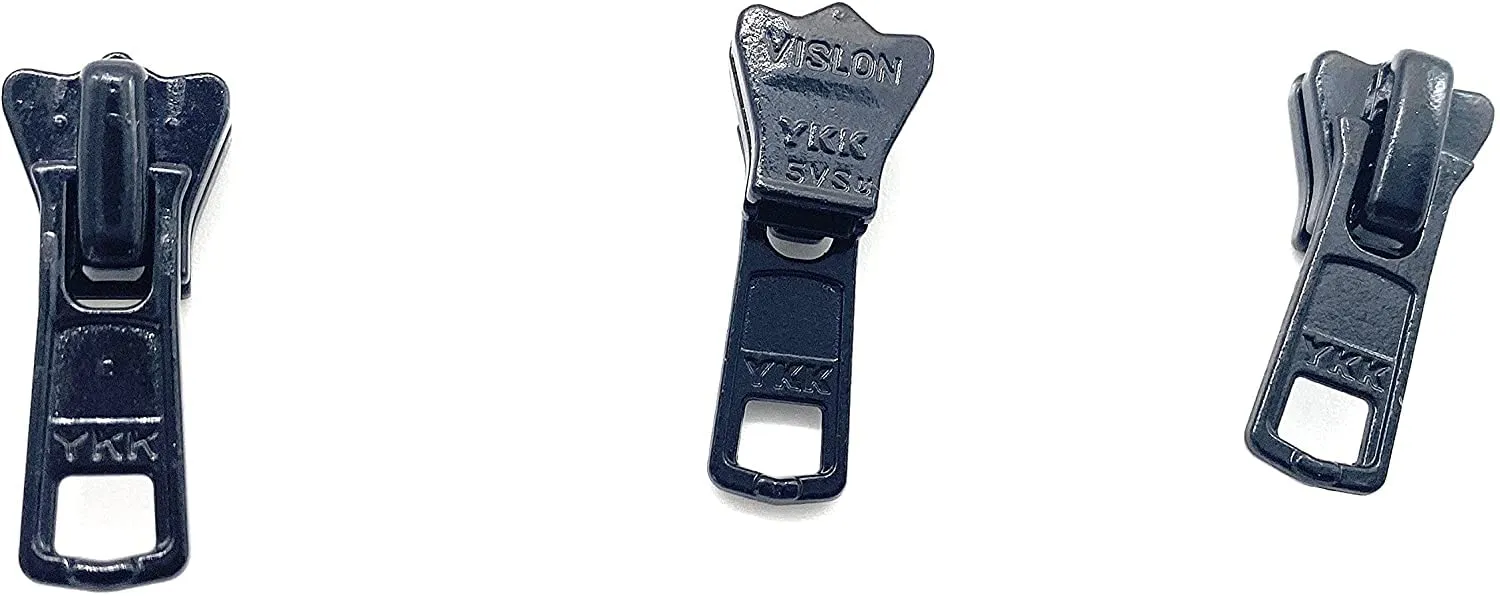
YKK Vislon Molded Jacket Sliders
Premium molded jacket sliders in black, perfect for outdoor gear and professional applications. These sliders offer exceptional durability and weather resistance.
✓ Weather Resistant
✓ Professional Grade
✓ Jacket Applications
My Top Recommendation
For most users, I recommend starting with the YKK #5 Vislon Slider Kit. It offers the best balance of versatility, quality, and value. The universal compatibility means it works with most applications you'll encounter, and the 10-pack ensures you have spares for future repairs.
Common Problems and Solutions
Throughout my career working with YKK sliders, I've encountered virtually every problem imaginable. Here are the most common issues and my proven solutions for each situation. Understanding these problems can help you diagnose issues quickly and implement effective fixes.
Slider Won't Move Smoothly
Symptoms: Slider catches, sticks, or requires excessive force to move.
Common Causes: Debris in slider track, misaligned teeth, or worn slider components.
Solution: Clean the slider and zipper teeth with a soft brush, apply zipper lubricant, and check for bent or damaged teeth. If the slider is worn, replacement is necessary.
Zipper Won't Stay Closed
Symptoms: Zipper opens by itself, especially under tension.
Common Causes: Worn slider cam, stretched zipper tape, or incompatible slider size.
Solution: Try gently squeezing the slider sides with pliers to increase tension. If this doesn't work, replace the slider with a new YKK slider of the correct size.
Slider Comes Off Track
Symptoms: Slider separates from one or both sides of the zipper tape.
Common Causes: Damaged bottom stop, excessive force, or worn slider.
Solution: Carefully realign the slider with both sides of the zipper tape. If the bottom stop is damaged, it may need replacement. Work the slider gently back onto the track.
Broken Pull Tab
Symptoms: Pull tab breaks off or becomes detached from slider.
Common Causes: Material fatigue, excessive force, or impact damage.
Solution: If the slider mechanism is intact, you can sometimes reattach the pull tab. However, replacement with a new YKK slider is usually the most reliable solution.
Preventive Maintenance Tips
- Regular Cleaning: Clean zippers monthly with a soft brush to remove debris and prevent buildup.
- Lubrication: Apply zipper lubricant (soap, wax, or commercial lubricant) periodically to maintain smooth operation.
- Gentle Operation: Always operate zippers slowly and avoid forcing them when they encounter resistance.
- Proper Storage: Store items with zippers closed to prevent deformation and stress on the slider.
- Regular Inspection: Check for early signs of wear, such as rough operation or visible damage to the slider or teeth.
When troubleshooting YKK slider issues, remember that proper diagnosis is crucial. Many problems that appear to be slider-related are actually caused by damaged teeth, worn tape, or improper maintenance. Taking time to thoroughly examine the entire zipper system will lead to more effective repairs.
For additional information about YKK slider maintenance and this comprehensive guide, visit the main YKK Slider resource page for updated tips and techniques.
Conclusion
After years of working with YKK sliders across countless applications, I can confidently say that understanding these components is essential for anyone serious about zipper maintenance and repair. The knowledge I've shared in this guide represents practical, tested experience that will serve you well in your own projects.
YKK sliders represent the gold standard in zipper technology, offering reliability, durability, and precision that generic alternatives simply cannot match. Whether you're repairing outdoor gear, maintaining work equipment, or simply fixing a favorite jacket, choosing authentic YKK sliders ensures long-lasting, professional results.
Key Takeaways
- Always use genuine YKK sliders for best results
- Proper sizing is crucial for successful repairs
- Regular maintenance prevents most problems
- Quality tools make the repair process easier
Final Recommendations
- Keep a selection of common sliders in your toolkit
- Practice on less valuable items first
- Document your repairs for future reference
- Consider professional help for expensive items
The investment in quality YKK sliders and proper repair techniques pays dividends in the long run. Not only will you save money by extending the life of your gear, but you'll also gain valuable skills that can be applied to countless situations. The confidence that comes from successfully repairing a zipper with your own hands is incredibly rewarding.
Remember that each repair is a learning opportunity. Every YKK slider you work with teaches you something new about zipper mechanics, material properties, and repair techniques. Don't be discouraged if your first attempts aren't perfect—even professionals had to start somewhere.
As you continue your journey with YKK sliders, keep experimenting with different types and applications. The knowledge you gain will serve you well, whether you're maintaining your own gear, helping friends with repairs, or even considering a career in textile repair and maintenance.
Thank you for reading this comprehensive guide. I hope it serves you well in all your YKK slider adventures!


